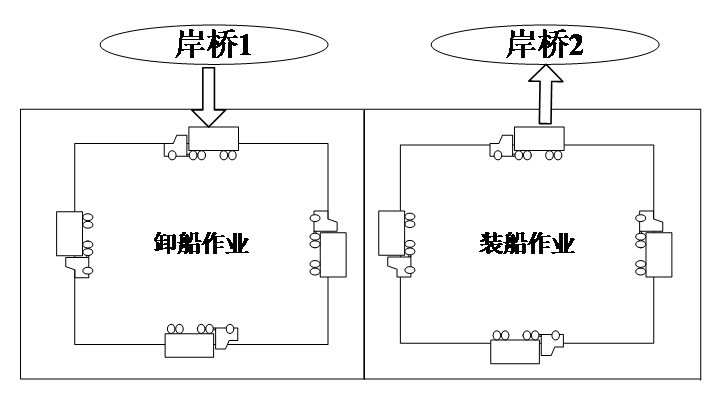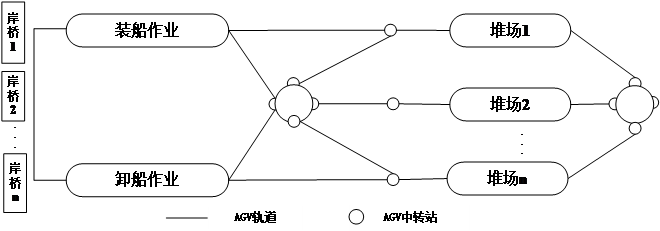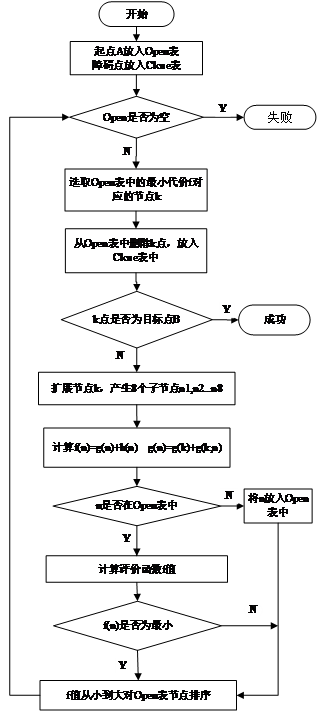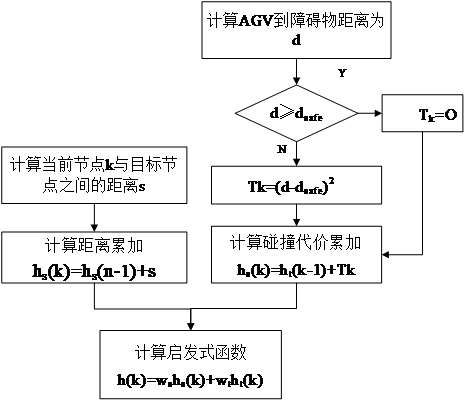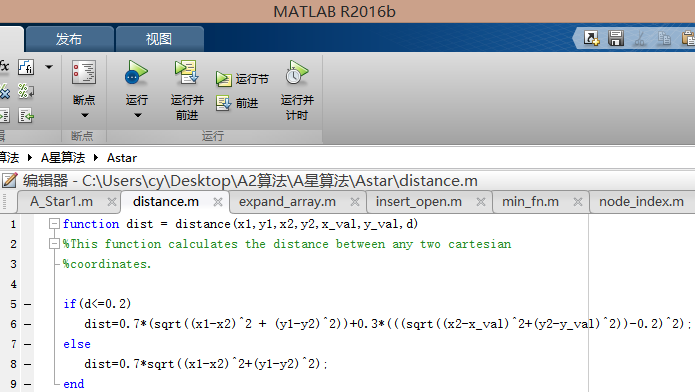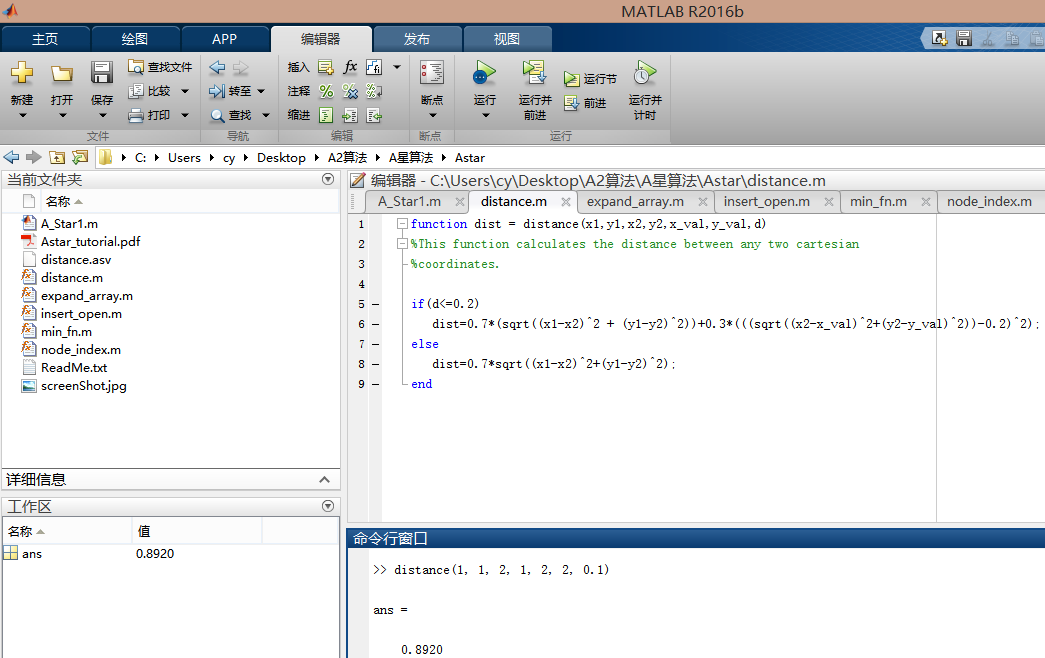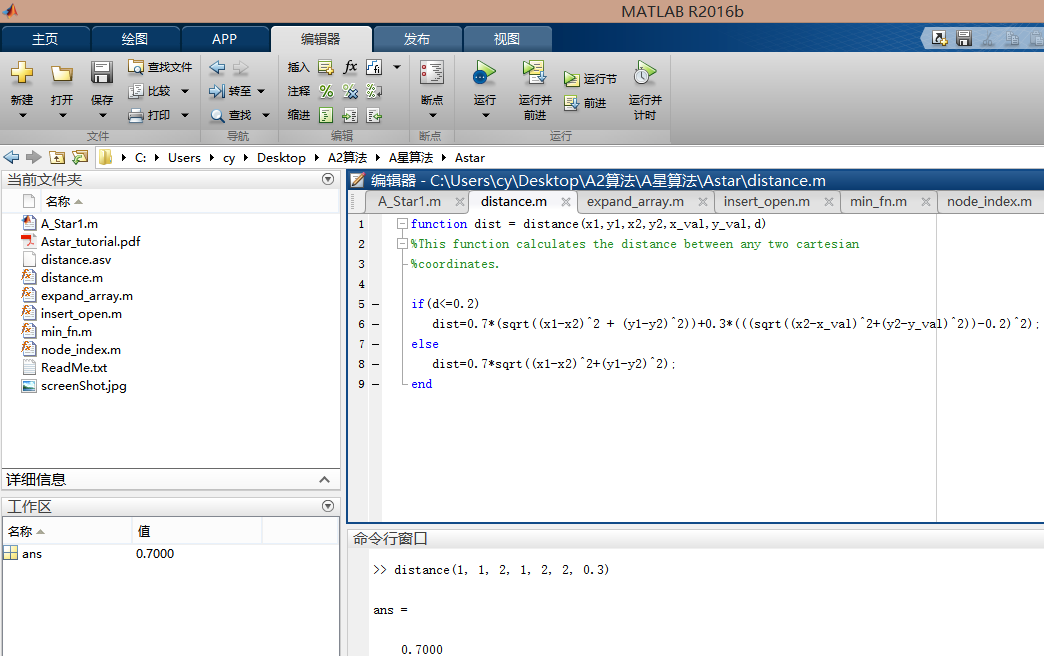基于A* 算法的自动化集装箱码头AGV路径规划研究毕业论文
2020-04-12 16:52:36
摘 要
随着全球经济的发展,集装箱码头在经济发展中越来越重要,为了提高集装箱码头竞争力,经营者纷纷采用自动化程度更高的机械设备。其中,大量的自动化导引小车(AGV)代替了传统水平运输机械。AGV运输管理系统的核心部分是AGV路径规划,优化AGV路径规划可极大提高港口工作效率和港口吞吐量。
本文首先分析了自动化集装箱码头的发展现状、港口布局和装卸工艺流程。同时,对集装箱码头AGV路径规划常使用的A*算法进行分析。通过分析得出:传统A*算法规划出的路径碰撞威胁较大。针对上述问题,本文提出了一种考虑碰撞威胁的A*算法。该算法在原启发式函数基础上考虑了AGV与障碍物间距离和安全距离,这样限制AGV与障碍物距离,避免发生碰撞,从而达到降低碰撞威胁的目的。最后以上海洋山深水港为例,运用改进的A*算法,根据实际情况设计仿真实验,探讨了改进的A*算法的可行性。
关键词:自动化集装箱码头;AGV;路径规划;A*算法
Abstract
With the development of the global economy, container terminals have become increasingly important in economic development. In order to improve the competitiveness of container terminals, operators have adopted more highly automated machinery and equipment. Among them, a large number of automated guided vehicles (AGV) have replaced traditional horizontal transport machines. The core part of the AGV transportation management system is the AGV path planning. Optimizing the AGV path planning can greatly improve the port work efficiency and the port throughput.
This article first analyzes the current status of the development of automated container terminals, port layout and handling process. At the same time, the A* algorithm often used in the path planning of container terminal AGV is analyzed. Through, it is concluded that the traditional A* algorithm has a greater risk of path collisions. In response to the above problems, this paper proposes an A* algorithm that considers collision threats. The algorithm considers the distance between the AGV and the obstacle, and the safety distance based on the original heuristic function, which limits the distance between the AGV and the obstacle, and avoids the collision, so as to reduce the collision threat. Finally, taking the Yangshan Deepwater Port as an example, the improved A* algorithm was used to design a simulation experiment based on actual conditions, and the feasibility of the improved A* algorithm was explored.
Key Words:Automated container terminal; AGV; Path planning; A* algorithm
目 录
第1章 绪论 1
1.1 研究背景 1
1.2 国内外研究发展现状 3
1.2.1 国外研究发展现状 3
1.2.2 国内研究发展现状 4
1.3 研究目的及意义 5
1.4 研究方案与技术路线 5
1.4.1 研究方案 5
1.4.2 技术方案 6
第2章 自动化集装箱码头AGV路径规划概述 8
2.1自动化集装箱码头作业系统分析 8
2.1.1 自动化集装箱码头布局 8
2.1.2 自动化集装箱码头主要机械设备 9
2.1.3 自动化集装箱码头装卸工艺流程 10
2.2 自动化集装箱码头AGV系统分析 11
2.2.1 自动化集装箱码头AGV系统概述 11
2.2.2 自动化集装箱码头AGV作业模式 12
第3章 自动化集装箱码头AGV路径规划的A*算法 15
3.1 传统A*算法 15
3.1.1 传统A*算法原理 15
3.1.2 传统A*算法优缺点 17
3.2 改进的A*算法 18
3.2.1 引入碰撞威胁改进原理 19
3.2.2 基于改进A*算法AGV路径规划流程 20
3.3 改进A*算法有效性验证 20
3.3.1 改进A*算法MATLAB实现方法 21
3.3.2 引入碰撞威胁的A*算法仿真实验 23
第4章 案例分析 26
4.1 洋山深水港介绍 26
4.2 基于改进后的A*算法洋山深水港AGV路径规划 27
4.2.1仿真系统设置 27
4.2.2仿真实验 28
第5章 总结与展望 30
5.1 全文总结 30
5.2 发展展望 30
参考文献 31
附录A 引入碰撞威胁A*算法程序代码 32
致谢 42
第1章 绪论
1.1 研究背景
当今世界生产体系和经济地理发生着巨大变化,各国政府纷纷出台相应措施,我国顺势推出了共建海上丝绸之路战略。海上丝绸之路是以沿海港口作为节点,依附于内陆城市生产网络和经济中心的贸易体系。因此港口的建设与发展显得十分重要,而集装箱港口由于周转效率高,装卸便捷,货物单位运输成本较低等特点得以快速发展。集装箱港口不仅是国内外集装箱货物的集散地,而且已成为国家综合物流中心和对外发展的窗口,随之而来的人工智能、物联网、3D打印等科学技术也悄然改变着集装箱港口,自动化集装箱港口的建设和发展成为全球关注的焦点。
改革开放前,我国经济不发达,港口发展落后,运输机械设备极度匮乏,集装箱运输发展迟缓。1973年国际对外贸易的发展给集装箱运输带来了一线生机,我国政府先后开辟了多条国际航线。40年来我国集装箱港口运输事业不断发展,最新统计报告显示,2017年世界前20大集装箱港口,我国有上海港、深圳港、宁波--舟山港、香港港、广州港、青岛港、天津港、厦门港、大连港九大集装箱港口入围。表1.1和表1.2是我国近年来主要集装箱港口吞吐量变化情况和2018年2月我国沿海规模以上港口集装箱吞吐量情况。
表1.1我国集装箱港口近年来吞吐量变化情况(单位:万TEU)
年份 | 2009 | 2010 | 2011 | 2012 | 2013 | 2014 | 2015 | 2016 | 2017 |
吞吐量 | 12200 | 10800 | 13499 | 17613 | 18878 | 20246 | 21200 | 21798 | 23193 |
表1.2 2018年2月沿海规模以上港口集装箱吞吐量(数据来源:交通运输部)
港口 | 当月完成 | 当月同比(%) | 自年初累积 | 累积同期比(%) | 计算单位 |
全国统计 | 1674.16 | 13.9 | 3732.36 | 9.1 | 万TEU |
沿海港口 | 1498.64 | 12.6 | 3341.24 | 9.2 | 万TEU |
内河港口 | 175.52 | 10.3 | 391.12 | 7.8 | 万TEU |
上海港 | 293.0 | 11.8 | 632.68 | 6.3 | 万TEU |
宁波—舟山港 | 204.15 | 16.3 | 441.86 | 13.9 | 万TEU |
深圳港 | 188.04 | 38.3 | 425.06 | 14.5 | 万TEU |
广州港 | 128.94 | 1.8 | 310.50 | 13.6 | 万TEU |
青岛港 | 135.11 | 1.0 | 297.44 | 0.6 | 万TEU |
天津港 | 104.95 | 1.9 | 225.57 | 7.5 | 万TEU |
厦门港 | 70.66 | 14.6 | 159.24 | 12.6 | 万TEU |
大连港 | 67.41 | 0.5 | 139.75 | 1.4 | 万TEU |
营口港 | 44.3 | 1.5 | 96.89 | 0.3 | 万TEU |
我国集装箱吞吐量稳步增长,据交通运输部发布数据显示:2017年,我国集装箱港口吞吐量约为2.31亿标准集装箱(TEU),其中,上海港集装箱吞吐量刷新世界纪录4000万标箱,成为世界吞吐量第一大港。2018年2月以来,春节前后运输需求量加大,各主要集装箱港口持续发力,完成集装箱吞吐量1674.16万TEU,累计同比增长了9.1%。分港口来看,宁波--舟山港、深圳港、广州港、厦门港1-2月份累计同比增长均呈现两位数增长,分别为13.9%、14.5%、13.6%、12.6%。
图1.1我国港口集装箱近年总吞吐量变化趋势
以上是毕业论文大纲或资料介绍,该课题完整毕业论文、开题报告、任务书、程序设计、图纸设计等资料请添加微信获取,微信号:bysjorg。
相关图片展示:
